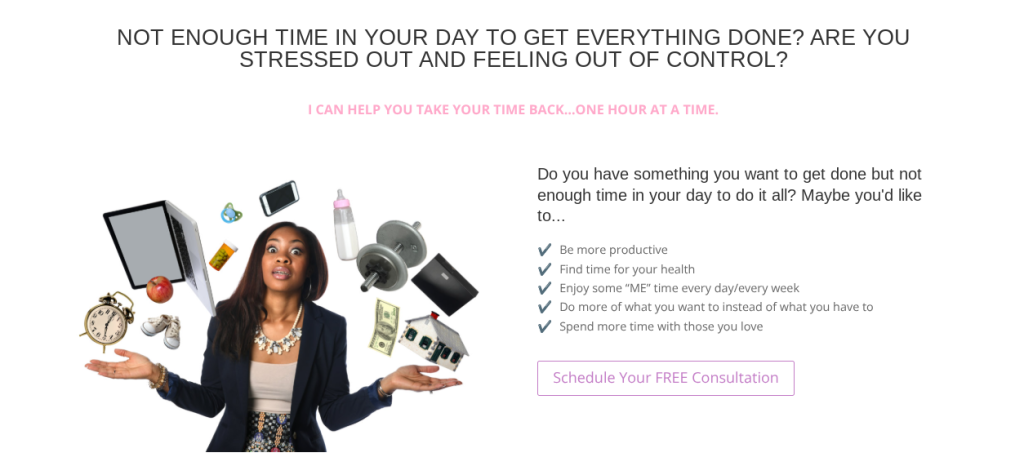Let’s be honest—you’re not just wearing one hat. You’re running a business, managing clients, answering messages, posting content, planning launches, updating your website, onboarding new team members, and still trying to keep your personal life from totally imploding. Sound familiar?
If it feels like you’re juggling seventeen balls in the air while balancing on a yoga ball…you’re not alone. Every client I coach says the same thing: “I have so much going on. I don’t even know what I’m forgetting.”
Managing multiple projects isn’t about being superhuman. It’s not about working harder or sleeping less or stuffing more in your calendar. It’s about getting clear, setting up systems that work with your brain, and giving yourself some actual breathing room.
Whether you’ve got ADHD, a creative mind, or just an overflowing list of “shoulds,” here’s what you need to know: it’s absolutely possible to stay on top of all your projects without burning out.
Let’s break down exactly how a coach helps make that happen—step by step.

Start With the Truth: You Can’t Manage What You Can’t See
Before anything gets done, it’s got to be visible. That’s one of the first mindset shifts we work on in coaching. You think you know everything you’ve got on your plate, but nine times out of ten, there’s a ton of hidden stuff—buried to-dos, emails you’re avoiding, things you told yourself you’d get to “next week”…three weeks ago.
We start with what I call a brain dump with no filter. Get it all out—client deliverables, personal errands, open loops, social media posts you’ve half-written in your head. No need to sort it all right now—just pour it out and get it off your mind. You can clean it up later, but first, give those thoughts somewhere to land.
What’s more, this process can be emotional. You’ll see tasks you forgot, promises you made to yourself that got pushed aside, and a whole lot of “stuff” that’s been quietly draining your energy. This is where the overwhelm hides.
Once it’s out of your head, it can go onto a Master Task List. That’s your central dashboard—not where everything gets done, but where everything lives. From here, we start to build a system that feels manageable again.

See It Clearly: Mapping Projects in a Way Your Brain Actually Gets
Not all brains like spreadsheets. Some folks light up with color-coded boards and sticky notes. Others love a dashboard with bells and whistles. The key is using tools that match how your brain thinks.
A big part of coaching through project overload is identifying your natural style. Are you visual? Verbal? Do you need tactile reminders or digital nudges? We test tools until we find what actually sticks.
Here are a few ways clients manage multiple projects in a visual, brain-friendly way:
- Trello or ClickUp Boards – Each project gets a board or a list. Inside each one? Tasks broken down step-by-step, labeled by priority, and tagged with due dates.
- Kanban-Style Whiteboards – For tactile learners, seeing “To Do,” “Doing,” and “Done” columns on a wall can bring huge relief.
- Notion Dashboards – Great for multi-project views in one place. Everything links to everything, and it feels like a digital command center.
- Post-It Wall or Paper Planner – Don’t underestimate the power of analog. Some brains crave the physical satisfaction of moving tasks from “working on it” to “complete.”
Remember, this isn’t about building a pretty system. It’s about having a home for everything so your brain doesn’t have to keep reloading the same mental tabs.

Prioritize Like a Coach: The ABC System with a Real-Life Twist
You’ve probably heard of prioritizing tasks as A, B, or C. But when you’ve got multiple projects, this gets more nuanced.
In coaching, we look at projects, not just tasks. Each week, we’ll identify:
- A Projects: Must move this week. These are client deadlines, launch pieces, or income-driving activities.
- B Projects: Need some attention but not urgent. Often long-term or internal projects.
- C Projects: Not a focus right now, but they’re not off the table.
What’s more, we’ll keep the list short. Just because you could move forward on seven projects doesn’t mean you should. Most clients do better focusing on two or three active projects at once.
Then, inside each active project, we use the same ABC idea for tasks. That way, you always know the next right thing to work on—no more guessing where your time should go.
It’s not that you’ll never touch your B or C projects. You’re just giving your full energy to what actually matters this week. That’s how real progress happens.
Time Blocking Isn’t Dead—You’re Just Doing It Wrong
Raise your hand if you’ve ever tried time blocking and felt like a total failure when you didn’t stick to your perfectly planned calendar.
Here’s the truth—cramming every single hour into a time block isn’t the point.
In coaching, we use flexible blocks that focus on categories, not specific micro-tasks. Think:
- Marketing Mondays – where you handle newsletters, social, scheduling, and content planning.
- Client Tuesdays & Thursdays – blocked off for meetings, delivery, and follow-ups.
- CEO Power Hour – a standing date each week to look at metrics, goals, and strategy.
We also build in buffer time—this is crucial. You’ll never get things done back-to-back without a break, and trying to do that just leaves you frustrated.
Time blocking works when it’s realistic. It gives structure without rigidity. That’s the balance we’re going for.
Task Switching vs. Multitasking: Know the Difference
Here’s what people often get wrong: multitasking burns you out, but switching between projects with intention actually helps keep things moving.
Instead of jumping back and forth randomly, we teach something called work batching. It means grouping similar tasks together so your brain doesn’t have to shift gears every five minutes.
For example:
- Write all your blog intros in one block.
- Respond to client emails during a set hour.
- Update project timelines across all clients in one sitting.
The key is staying in one type of task at a time—even if the projects are different.
This keeps your energy focused, reduces decision fatigue, and helps you build momentum without crashing midday.
Create Weekly Checkpoints—Not Just To-Do Lists
To-do lists are fine. But they don’t always show you the big picture. That’s where weekly reviews come in.
Once a week, ideally on Friday or Sunday night, sit down with your system and ask:
- What did I actually finish?
- What got delayed—and why?
- Where did my time go that I didn’t plan for?
- What are my top three project priorities for next week?
Coaches don’t just help you plan—we help you review. Because that’s where the real clarity lives.
Without these touchpoints, it’ll keep feeling like you’re behind— even if you’re right on track.
Learn to Say No to Yourself (And Everyone Else)
It’s easy to say yes. Saying no? That takes some serious reps.
Coaching helps you understand your true capacity, not just what looks possible on paper. Just because a time block exists doesn’t mean it’s available. Energy, mental space, and real-life interruptions all count too.
We practice saying no from a place that feels right—not out of guilt. In other words:
- “This isn’t a fit right now.”
- “I’d love to help, but my plate is full this quarter.”
- “I need to finish what I’ve started before adding something new.”
And yes, sometimes it means saying no to yourself. That new idea? That collaboration offer? That extra thing you want to create? Not right now.
This part isn’t easy. But it’s one of the biggest growth edges for people managing multiple projects.
Your Energy Is a Resource—Manage That Too
People love to obsess over time. But energy matters more.
You’ve probably noticed that some tasks drain you while others light you up. Some days you’re fired up and unstoppable. Other days, remembering lunch feels like a win.
A coach helps you track those patterns and schedule based on energy, not just availability.
High-energy times are great for:
- Creative work
- Deep focus tasks
- Strategy sessions
Low-energy times? That’s when you tackle admin, review, or prep work.
Stop pushing against your energy—start moving with it. The difference in productivity is massive.
Tools Are Not a Strategy—They’re Just Tools
You can spend hours customizing a perfect-looking Trello board…and still be overwhelmed. That’s because tools don’t fix disorganization. Strategy does.
I see this all the time—people assume the perfect app, like Todoist, Trello, Monday or Asana, is the magic fix.But without a framework behind it, it’s just digital clutter.
Coaching is about building systems around your habits, your bandwidth, and your business needs. Then we choose the tool that supports that—not the other way around.
And if your system stops working? You don’t burn it down. You tweak it. We iterate. That’s how you stay consistent.
You’re Not Lazy, You’re Managing Too Much Alone
Let’s get something clear—you’re not lazy. You’re not bad at planning. You’re not a mess.
You’re probably just holding too many things at once…without support.
Juggling multiple projects doesn’t mean you’ve gotta keep it all in your head or tackle it alone. There’s no prize for doing it the hardest way possible.
Coaching gives you structure, tools, and a partner in the process. Someone who can help you zoom out, sort through the chaos, and build systems that work for you.
You don’t need a total overhaul. You just need a better way.
Ready to Simplify the Chaos?
If you’re tired of spinning plates, forgetting deadlines, and wondering where the day went—let’s chat. Handling multiple projects doesn’t need to feel like you’re constantly scrambling to keep up.
Coaching isn’t about being perfect. It’s about building real strategies for real business owners who’ve got a lot going on.
Let’s make your work feel less like a tornado and more like a plan you can trust. Let’s make your work feel less like a tornado and more like a plan you can trust. Learn More About My Private Time Management Coaching!

